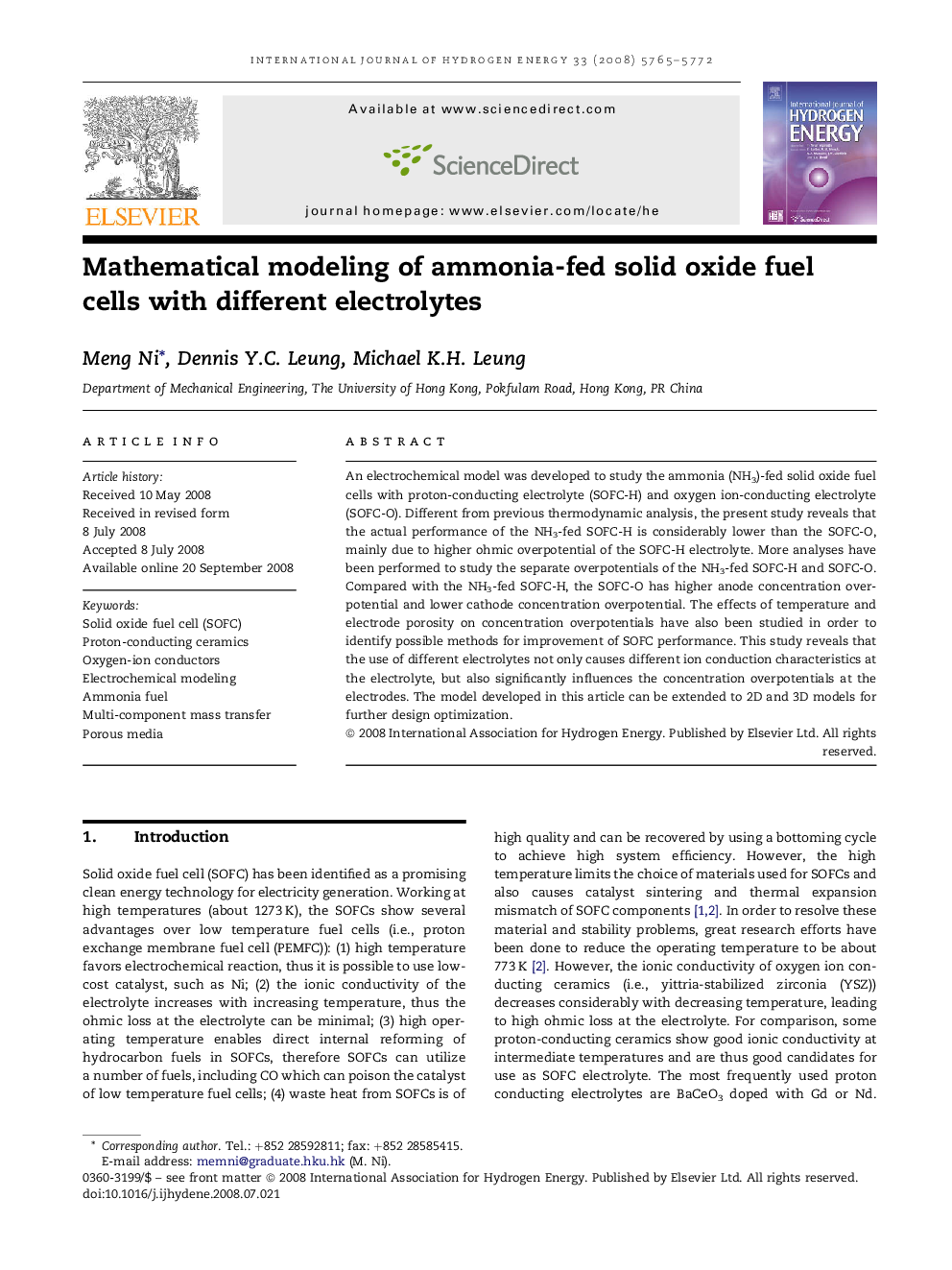| Article ID | Journal | Published Year | Pages | File Type |
|---|---|---|---|---|
| 1278518 | International Journal of Hydrogen Energy | 2008 | 8 Pages |
An electrochemical model was developed to study the ammonia (NH3)-fed solid oxide fuel cells with proton-conducting electrolyte (SOFC-H) and oxygen ion-conducting electrolyte (SOFC-O). Different from previous thermodynamic analysis, the present study reveals that the actual performance of the NH3-fed SOFC-H is considerably lower than the SOFC-O, mainly due to higher ohmic overpotential of the SOFC-H electrolyte. More analyses have been performed to study the separate overpotentials of the NH3-fed SOFC-H and SOFC-O. Compared with the NH3-fed SOFC-H, the SOFC-O has higher anode concentration overpotential and lower cathode concentration overpotential. The effects of temperature and electrode porosity on concentration overpotentials have also been studied in order to identify possible methods for improvement of SOFC performance. This study reveals that the use of different electrolytes not only causes different ion conduction characteristics at the electrolyte, but also significantly influences the concentration overpotentials at the electrodes. The model developed in this article can be extended to 2D and 3D models for further design optimization.
